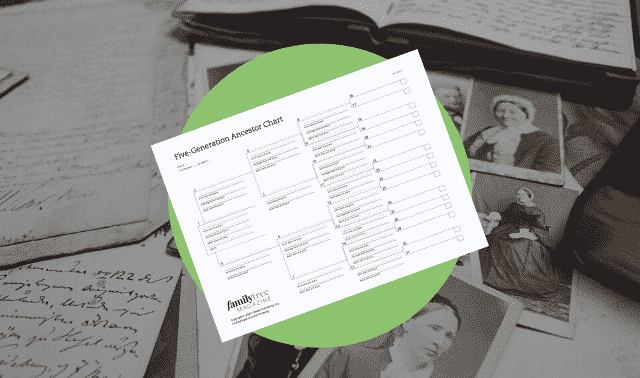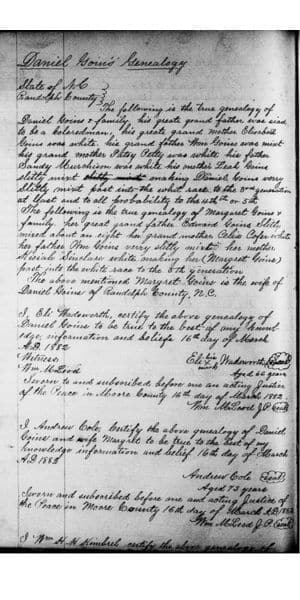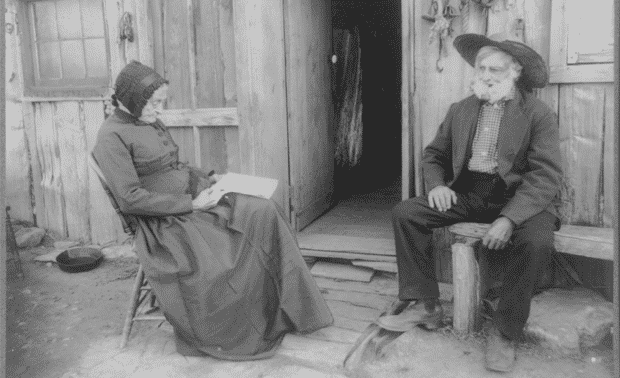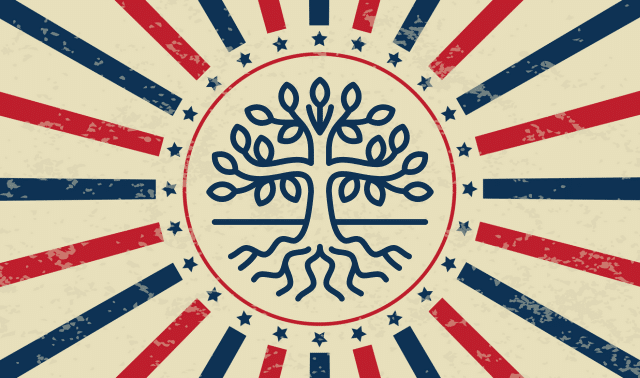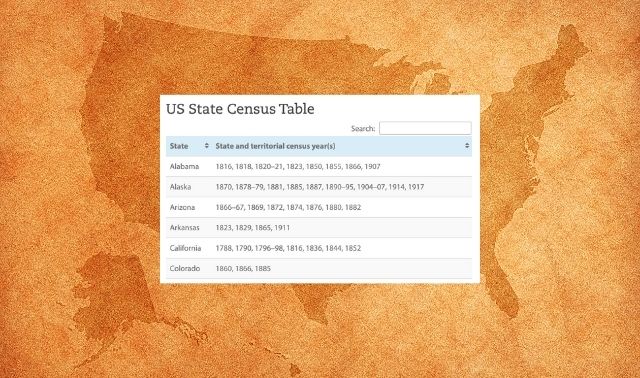Sign up for the Family Tree Newsletter! Plus, you’ll receive our 10 Essential Genealogy Research Forms PDF as a special thank you.
Get Your Free Genealogy Forms
"*" indicates required fields
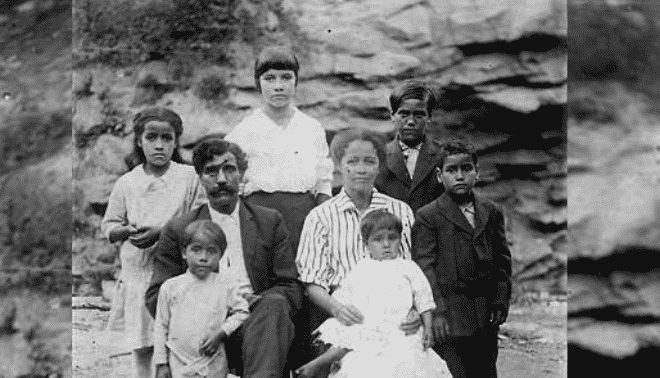
NOTE: Some passages of this article were written by Jennifer Churchill.
In genealogical research, the documents we discover often tell the story—or at least a part of it! An intriguing document for my Goins ancestors aided my personal discovery of my Melungeon ancestors and led to greater understanding of the laws and conditions that dictated their everyday life. In 1882, Daniel and Margaret Goins took great pains to document how white they were. The question of race is at the heart of Melungeon myths and legends.
Typically, the term Melungeon refers to people from eastern Kentucky, southwestern Virginia, eastern Tennessee and southern West Virginia, according to the Melungeon Heritage Association, but “related mixed-ancestry populations also include the Carmel Indians of southern Ohio; the Brown People of Kentucky; the Guineas of West Virginia; the We-Sorts of Maryland; the Nanticoke-Moors of Delaware; the Cubans and Portuguese of North Carolina; the Turks and Brass Ankles of South Carolina; and the Creoles and Redbones of Alabama, Mississippi and Louisiana.”
One of the earliest uses of the word “Melungin” was given in Baptist Church records in Scott County, Virginia, in September 1813. The word was often used as a pejorative, and the people in question tried to distance themselves from the derogatory connotations associated with their free but non-white status by claiming Native American heritage. Later, there was a rise in declaring Portuguese ancestry as a way of explaining a person’s mixed race. Newspaper articles written in the early 1890s by female author Will Allen Dromgoole popularized the stories and mystery associated with Melungeons in East Tennessee after she traveled and spent some time in the community. These articles were widely shared and likely contributed to existing concerns and questions about what seemed to be a strange group of isolated people.
Most families in Appalachia have some Melungeon roots, although many aren’t aware of them — or try to keep them a family secret. After suffering from centuries of Anglo American racism, many families have purposely buried their Melungeon ancestry, making genealogical research a challenge.
“It’s ironic that our families went to such pains to cover up their heritage and now, 150 years later, we’re going to such pains to uncover it,” says Carol Huff, a Kentucky native who discovered her Melungeon heritage a few years ago.
Are you a Melungeon?
The hardest question for a genealogist to answer is the first and most obvious one: “Am I a Melungeon or not?” Researching this topic often reveals confusion and frustration with the lack of physical evidence and absence of that elusive paper trail genealogists so intensely crave.
Physical characteristics of Melungeons
The physical evidence may be the most telling. Melungeon traits include:
- dark hair and skin with light-colored eyes
- stark contrasts in skin and hair color within a single family
- American Indian features
- a particular type of bump or ridge at the back of the head (usually just above the neck) known at the Melungeon bump
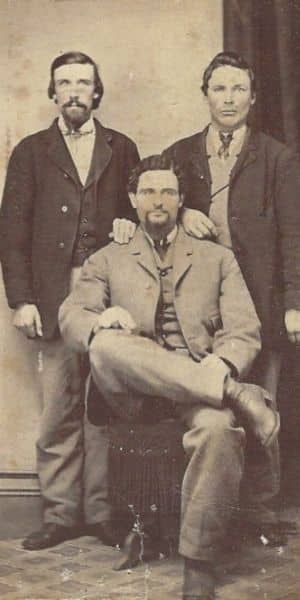
What race is Melungeon?
The Melungeons’ origins are still being debated. Some researchers believe they descend from the lost colony of Roanoke, and ended up marrying into American Indian families. Others say the Melungeon people descend from the legendary Welsh explorer Madoc, who supposedly explored the southern Appalachian region in the 1100s. Still others theorize that the Melungeons are merely a tri-racial mix of Caucasian Europeans, escaped African-American slaves and American Indians.
Written by Jennifer Churchill
Melungeon Last Names
According to FamilySearch Wiki, some common Melungeon last names may include:
- Bowling (Bolin)
- Bunch
- Chavis (Chavez)
- Collins
- Epps
- Evans
- Fields
- Francisco
- Gibson
- Gill
- Goins
- Goodman
- Minor
- Mise
- Moore
- Mullins
- Osborn(e)
- Phipps
- Reeves (Rives, Rieves, Reeves, Reaves)
- Ridley (Riddle)
- Rodrigues
- Stowers
- Vanover
- Williams
- Wise
All that said, I caution that a surname alone is not indicative of mixed race heritage. Such a surname, in combination with many other indicators (such as the color or race recorded in a U.S. census and the laws that your ancestors were subject to) provide evidence that can lead to the conclusion that you have Melungeon ancestry.
Melungeon People in Your Family Tree
So, how do you determine if you have melungeons in your family tree? There are a few key characteristics that might give that away. To co-opt a phrase coined by comedian Jeff Foxworthy, you might be Melungeon if…
Your Ancestors were Described as “Free People of Color”
From 1790 to 1810, the U.S. census had a category for “free people of color,” which was changed slightly to “free colored persons” in 1820. The first three censuses had only a single column for free people of color, with a single total number of household members entered into that column.
Enumerators of the first U.S. census in 1790 were instructed to account for free white males under the age of 16, free white males over the age of 16, free white females, “all other free persons,” and enslaved individuals. In this instance, free persons included everyone not white or enslaved. It encompassed free Black people as well as Native Americans who lived under U.S. jurisdiction.
The age ranges for free people of color were expanded in the 1820 to 1840 censuses; however, the ranges were broader than those of free white persons. For example, in 1820 free white males were placed into six different age categories, while free colored males were attributed to only four age groupings.
In 1850, enumerators were given the following instructions, which preceded the statement, “It is very desirable that these particulars be carefully regarded”:
Under heading 6, entitled “Color,” in all cases where the person is white, leave the space blank; in all cases where the person is black, insert the letter B; if mulatto, insert M.
The terminology “free people of color” was not only used in U.S. censuses—it was a descriptor used in many documents, such as in court records. For example, in March 1860 the Court of Pleas and Quarter Sessions in Northampton County, North Carolina, held a jury of inquest into the death of John F. Newsom, who was described as a free person of color.
Your Ancestors Created Documents Stating How “White” They Were
Daniel Goins and his wife Margaret Goins (her maiden name) married about 1855, likely in Moore County, North Carolina. By 1870, they lived in adjoining Randolph County, and it was there where the genealogies of Daniel and Margaret were recorded in deed books twelve years later. On 16 March 1882, Daniel and Margaret (who were first cousins once removed), recounted the names and races of their ancestors, starting with his great-grandparents and her grandparents.
Their ancestors were described as either “mixt” or white—no particular race was given. The conclusion was that Daniel was “very slitly mixt” and was “passed into the white race to the 3rd generation at least and to all probability to the 4th or 5th.” His wife Margaret was passed into the white race to the 5th generation. Three individuals who were residents of adjoining Moore County, where Daniel and Margaret were raised, signed affidavits attesting to the accuracy of this information. The ages of these witnesses were also given (66, 73, and 67 years old), presumably as evidence that they were old enough to know these facts about Daniel’s and Margaret’s ancestors, whom they knew personally.
Two years after the initial “Genealogy of Daniel Goins” was recorded, on 16 July 1884 two women who lived in nearby Cumberland County stated that Daniel’s previously unnamed great-grandfather was named John Harmon. Flora McDonald and Catharine McBride, aged 88 and 83 respectively, stated: “[John Harmon] was a native of Portugal, and was always called a Portugan, and he was the color of the natives of that place, and that he and his sons and grandsons always exercised the right of and passed as white men in every respect.”
Margaret’s great-grandfather and Daniel’s grandfather, William Goins (seen in the 1790 census above), married a white woman named Patsey Petty. William was an adult male who received a colonial land grant in what was then Cumberland County, North Carolina. The patent for 300 acres, located on both sides of Pocket Creek, is dated 9 November 1764. From this, I have estimated that William was perhaps born about 1740. This provides a time frame for this first known and documented family member who may have been the first individual “of color,” being either half or full.
Your Ancestors Were Submit to Laws Imposed Exclusively on “Free Persons of Color”
These laws might have varied from one geographic region to another. Examples included:
- Prohibiting marriage between a free person of color and a white person. On 8 January 1839, the state of North Carolina ratified a law prohibiting marriages between free persons of color and white persons, declaring that any such unions after that date “shall be null and void.” These are anti-miscegenation laws, and they were enacted primarily in the Southern United States. They remained in effect in many states until 1967. These laws had the effect of creating endogamous communities, where people within the group married each other over many generations. When this happens, you may descend from the same ancestors in different ways. Endogamy also affects DNA analysis, because the descendants will share more DNA with each other than expected.
- Restricting ability to carry a firearm or knife without a license. Citing a law enacted by the state of North Carolina on 11 January 1841 titled “An act to prevent free persons of color from carrying firearms,” in February 1842 the Randolph County attorney charged Anderson Waldon, a free person of color, with carrying a rifle without obtaining a license during the previous year. The law stated that any free negro, mulatto, or free person of color who wanted to carry or keep in his or her house “any shot gun, musket, rifle, pistol, sword, dagger, or bowie-knife” had to obtain a license from the Court of Pleas and Quarter Sessons to do so.
- Requiring a character certificate. Your ancestors may have been required to obtain “character certificates” or “free papers,” especially if they were traveling to another state, in order to prove that they were free and of good character and reputation. These papers usually included a physical description and a brief lineage. These papers primarily focused on manumitted or emancipated slaves; however, this sometimes spilled over and affected all free people of color, even those who had never been enslaved.
Your DNA Results Indicate Mixed-race Heritage
The Journal of Genetic Genealogy published a DNA study in which “genetic evidence shows that the families historically called Melungeons are the offspring of sub-saharan African men and white women of northern or central European origin.” This study was exclusive to descendants of individuals who lived in Hawkins and Hancock counties, Tennessee, and the southern portion of adjoining Lee County, Virginia.
The Melungeon Core DNA project, organized and maintained by administrators Lerry Goins, Penny Ferguson, and Roberta Estes, is available to join for Y-DNA testers (direct male descendants). These three individuals also created a group called Melungeon-mtdna for those with mtDNA results (male or female tester who is a direct descendant on a maternal line). According to their web page, this project “is a study of males and females who have proven known Melungeon ancestors, according to old records, and agreed on by some of the top serious Melungeon researchers.”
Final Word
While my examples are from North Carolina, these types of laws and the documents generated because of these laws can be found throughout the Southern U.S. My Goins family left the state of North Carolina soon after the end of the Civil War and lived briefly in Indiana and Kansas before moving on to settle permanently in the Pacific Northwest. After they left the South, they were recorded as “white” in records, and their ambiguous racial origins were lost through time and geographic distance.
Related Reads
A version of this article appeared in the December 2003 issue of Family Tree Magazine. Last updated: January 2025
FamilyTreeMagazine.com is a participant in the Amazon Associates Program, an affiliate advertising program. It provides a means for this site to earn advertising fees, by advertising and linking to Amazon and affiliated websites.

